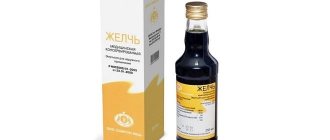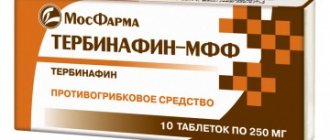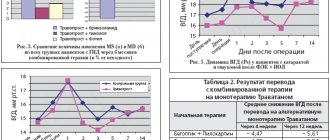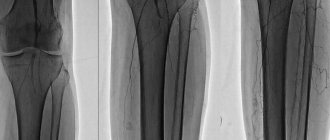Pharmacological properties of the drug Hydroxyethyl starch
Hydroxyethylated starch is produced from waxy corn starch by partial hydrolysis of amylopectin followed by hydroxyethylation. A 6% solution of hydroxyethyl starch in an isotonic solution of sodium chloride is used as a colloidal plasma replacement agent. Infusion of such a weakly hyperoncotic solution leads to an increase in reduced colloid osmotic pressure and central venous pressure. Infusion of hydroxyethyl starch improves the rheological properties of blood. Hydroxyethylated starch does not accumulate in the body; some time after infusion is found in the cells of the reticuloendothelial system.
List of contraindications for use
Instructions for use for hydroxyethyl starch (for all drugs that contain this active ingredient, it is almost completely similar) informs that there are the following contraindications for use:
- Individual high sensitivity to the active element.
- TBI, which is accompanied by increased intracranial pressure (ICP).
- If there is a suspicion of intracranial bleeding, as a rule, using the drug is strictly prohibited.
- Arterial hypertension (as opposed to hypotension, which is indicated in the list of indications for the use of drugs with hydroxyethyl starch as the main active ingredient).
- Chronic heart failure.
- Renal failure in both acute and chronic forms (accordingly, if the patient is on hemodialysis, the use of drugs containing hydroxyethyl starch is also prohibited).
- Acute left ventricular failure.
- Cardiogenic pulmonary edema.
- Thrombocytopenia.
- Allergy and intolerance to starch.
- Children's age up to 10 years.
- Overhydration, coagulopathy, hypocoagulation, dehydration.
- Hypofibrinogenemia.
There are also relative contraindications for use. Instructions for use for hydroxyethyl starch (this applies to all drugs that contain this active ingredient) indicate that the relative contraindications for use are as follows:
- chronic diseases of the liver, pancreas, kidneys;
- children under 10 years of age;
- von Willebrand disease;
- chronic diseases of the urinary system.
Use of the drug Hydroxyethyl starch
IV drip, the first 10–20 ml slowly under strict medical supervision. The daily dose and rate of infusion depend on the volume of blood loss and hematocrit values. To compensate for bcc, a daily dose of 250–1000 ml is administered; in exceptional cases, the daily dose of 20 ml/kg may be exceeded. When used for hemodilution, hydroxyethyl starch is administered over several days in a daily dose of 500 ml; course dose - no more than 5 l, duration of treatment - up to 4 weeks. The recommended infusion rate is 500 ml in 30 minutes.
Hypovolemia - symptoms, causes and therapy
Hypovolemic condition is one of the most common conditions for which therapy with hydroxyethyl starch is carried out. This is a persistent and progressive decrease in the volume of circulating blood in the patient's body. As a result of this condition (in the absence of qualified medical care), death can occur. For information: in a normal, healthy and non-pathological state, in adult women the total blood volume is 58–64 ml per 1 kg of body weight, in men – 65–75 ml/kg.
Reasons for the development of hypovolemia:
- blood loss caused by wounds, trauma, surgery, chronic diseases (some types of pathologies of the gastrointestinal tract can cause internal bleeding - this condition is a direct threat to the patient’s life);
- loss of a significant amount of fluid by the body (this condition can develop as a result of burns over a large area of the body, polyuria, incessant diarrhea, severe vomiting in case of serious poisoning);
- sharp, sudden dilation of blood vessels with a change in the rhythm of circulating blood;
- various types of shock conditions provoked by injuries or chronic diseases of the cardiovascular system (heart attack, stroke, etc.);
- deficiency of incoming fluid (plain water) into the patient’s body against the background of the development of severe inflammatory and infectious processes; a similar condition can also arise due to the patient’s prolonged stay in a room with high air temperature).
Depending on a special medical indicator - hematocrit - several stages of hypovolemia are distinguished, while the instructions for hydroxyethyl starch warn that the drug is relatively more or less effective depending on the type of pathology:
- normocythemic is a general gradual decrease in the volume of circulating blood, while it should be taken into account that the ratio of plasma and formed elements remains almost completely preserved;
- oligocythemic - a decrease in the number of blood cells, i.e. we can say that the hematocrit value decreases;
- polycythemic - hematocrit is higher than normal, as the plasma volume indicator decreases.
Any stage of hypovolemia is very dangerous for the patient, for whatever reason it occurs. If you suspect such a condition, you should not self-medicate, even if it is possible to install a drip with hydroxyethyl starch at home. The patient needs long-term rehabilitation after serious blood loss; he needs constant high-quality monitoring of his condition, which can only be carried out by a professional.
Links[edit]
- ^ a b Zarychansky, R; Abu-Setta, A.M.; Turgeon, A.F.; Houston, BL; McIntyre, L; Marshall, J.C.; Fergusson, D.A. (February 20, 2013). "Association of hydroxyethyl starch use with mortality and acute kidney injury in critically ill patients requiring volume resuscitation: a systematic review and meta-analysis". JAMA: Journal of the American Medical Association
.
309
(7):678–88. DOI: 10.1001/jama.2013.430. PMID 23423413. - ^ ab Westphal, M.; James, M.; Kozek-Langenecker, S.; Stocker, R.; Guidet, B.; Van Aken, H. (2009). “Hydroxyethyl starches: different products, different effects. [Review] [140 links]". Anesthesiology
.
111
(1):187–202. DOI: 10.1097/aln.0b013e3181a7ec82. PMID 19512862. - ^ ab "Hydroxyethyl starch (HES) solutions should no longer be used in patients with sepsis, burn injuries, or in critically ill patients" (press release). European Medicines Agency. 2013-10-23.
- Lewis, Sharon R.; Pritchard, Michael W.; Evans, David Joo; Butler, Andrew R.; Alderson, Phil; Smith, Andrew F.; Roberts, Ian (8 March 2018). "Colloids versus crystalloids for fluid resuscitation in the critically ill". Cochrane Database of Systematic Reviews
.
8
: CD000567. DOI: 10.1002/14651858.CD000567.pub7. ISSN 1469-493X. PMC 6513027. PMID 30073665. - Miller: Anesthesia, 6th ed., pp. 1787
- Brunkhorst FM, Engel C, Bloos F, et al (January 2008). "Intensive insulin therapy and pentastarch resuscitation in severe sepsis". N.Engl.
J. Med .
358
(2):125–39. DOI: 10.1056/NEJMoa070716. PMID 18184958. S2CID 8441982. - ^ a b Perner, A.; Haase, N.; Wetterslev, J.; Åneman, A.; Tenhunen, J.; Guttormsen, A. B.; Klemenzson, G.; and others. (2011). "Comparison of the effect of hydroxyethyl starch 130/0.4 with a balanced crystalloid solution on mortality and renal failure in patients with severe sepsis (study 6S - Scandinavian starch for severe sepsis/septic shock): study protocol, double-blind study design and rationale, randomized clinical trial ". Tests
.
12
: 24. DOI: 10.1186/1745-6215-12-24. PMC 3040153. PMID 21269526. - Downar, James; Lapinski, Stephen E. (January 29, 2009). "Pro/Con Debate: Should Synthetic Colloids Be Used in Patients with Septic Shock?" . Critical Help
.
13
(1): 203. DOI: 10.1186/cc7147. PMC 2688101. PMID 19226441. - Editor's key statement regarding published clinical trials conducted without IRB approval by Joachim Boldt (PDF), March 4, 2011
- ^ b "Public Seminar: Risks and Benefits of Hydroxylethyl Starch Solutions", Vaccines, Blood and Biologics
, US Food and Drug Administration - ^ ab "FDA Safety Communication: Boxed Warning of Increased Mortality and Severe Kidney Damage, and Additional Warning of Risk of Bleeding with the Use of Hydroxyethyl Starch Solutions in Certain Conditions", Vaccines, Blood & Biologics
, US Food and Drug Administration, November 25 , 2013 - ^ a b Hartog, S.; Reinhart, K. (2009). "CONTROL: Hydroxyethyl starch solutions are unsafe for seriously ill patients." Reanimatology
.
35
(8):1337–42. DOI: 10.1007/s00134-009-1521-5. PMID 19533093. S2CID 7973629. - ^ a b Perner A., Haase N., Guttormsen A.B., Tenhunen J., Klemencson G., Ohneman A., Madsen K.R., Møller M.H., Elkjær J.M., Poulsen L. M., Bendtsen A., Winding R., Stensen M., Berezovich P., Sø-Jensen P., Bestl M., Strand K., Wiis J., White J. O., Thornberg K. J., Quist L., Nielsen J., Andersen L.H., Holst L.B., Tormar K., Kjeldgaard A.L., Fabricius M.L., Mondrup F, FK Pott, Möller T.P., Winkel P. , Wetterslev J. , 6C Trial, Group; Scandinavian Critical Care Trials, Group (July 12, 2012). "Hydroxyethyl starch 130/0.42 versus Ringer's acetate in severe sepsis". New England Journal of Medicine
.
367
(2):124–34. DOI: 10.1056/NEJMoa1204242. PMID 22738085. S2CID 5893988. - ^ ab Wojcik, Jepp (July 24, 2012). "Pharmaceutical giant threatens Danish scientist". ScienceNordic
. Retrieved August 13, 2012. - Myburgh, John A.; and others. (2012). "Hydroxyethyl starch or saline solution for fluid resuscitation in intensive care". N Engl J Med
.
367
(20):1901–1911. DOI: 10.1056/NEJMoa1209759. PMID 23075127. - Dellinger, R. Phillip; Levy, Mitchell M.; Rhodes, Andrew M.B.; Annane, Jillali; Gerlach, Herwig; Opal, Stephen M.; Sevransky, Jonathan E.; Sprung, Charles L.; Douglas, Ivor S.; Jaeschke, Roman; Osborne, Tiffany M.; Nunnally, Mark E.; Townsend, Sean R.; Reinhart, Conrad; Kleinpell, Ruth M.; Angus, Derek S.; Deutschman, Clifford S.; Machado, Flavia R.; Rubenfeld, Gordon D.; Webb, Stephen A.; Beale, Richard J.; Vincent, Jean-Louis; Moreno, Rui; Sepsis Campaign Guidelines Committee, including a pediatric subgroup (February 2013). "Surviving Sepsis Campaign: International Guidelines for the Management of Severe Sepsis and Septic Shock: 2012." Critical Care Medicine
.
41
(2):580–637. DOI: 10.1097/CCM.0b013e31827e83af.PMID 23353941. S2CID 34855187. - Press release: MHRA suspends use of hydroxyethyl starch (HES) drops, Medicines and Healthcare Products Regulatory Agency, 27 June 2013, archived from the original on 1 July 2013.
- "European Medicines Agency - Medicines for human use - medicinal products containing hydroxyethyl starch (HES)". www.ema.europa.eu
. Retrieved January 27, 2022. - "Hydroxyethyl starch solutions: CMDh introduces new measures to protect patients". European Medicines Agency
. July 17, 2022. - ↑
Bork, K. (January 2005).
"Itch precipitated by hydroxyethyl starch: a review." British Journal of Dermatology
.
152
(1):3–12. DOI: 10.1111/j.1365-2133.2004.06272.x. PMID 15656795. S2CID 13483776. - “PRAC confirms that hydroxyethyl starch (HES) solutions should no longer be used in patients with sepsis, burn injuries or in critically ill patients” (press release). Pharmacovigilance Risk Assessment Committee, European Medicines Agency. October 11, 2013
Interaction with other medicinal substances
Before starting administration, you should make sure that it is possible in parallel with medications already taken - the instructions for using hydroxyethyl starch warn about this. The active substance may antagonize the components of other drugs. If for some reason they are not combined, many serious side effects may develop. The name “Hydroxyethyl starch INN” is one of the most common, but it should be noted that doctors often use its analogues - these are “Volekam”, “Hemohes”, “Voluven”, “Hydroxyethyl starch-Eskom”.
The drug cannot be mixed in the same dropper bottle with any other solutions and compositions.
When used in parallel with heparin, the risk of increased bleeding increases. Therefore, such a combination is undesirable.
When taken in parallel with beta-blockers and vasodilators, it should be taken into account that changes in blood pressure can be diagnosed, and the heart rate may change.
The use of drugs containing hydroxyethyl starch can have a significant impact on various blood test parameters - in particular, the amount of fatty acids, the amount of protein, and ESR. The specific gravity of urine may also change with regular use.




